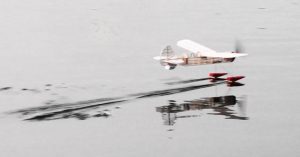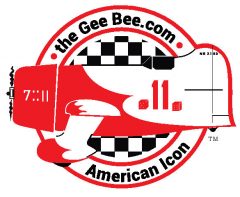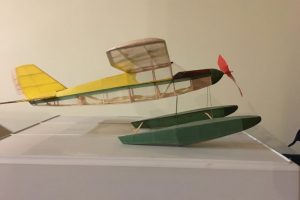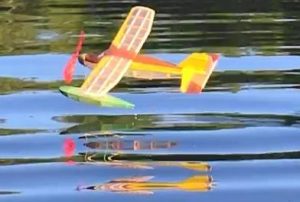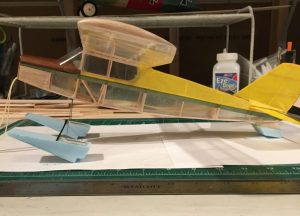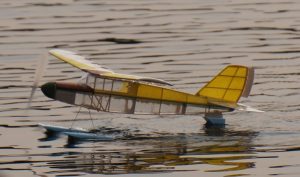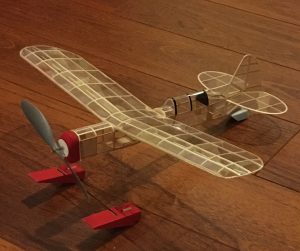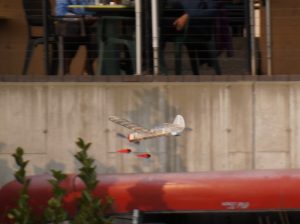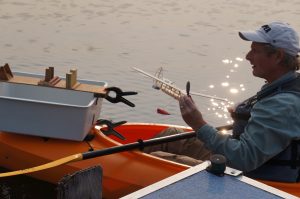
I have always been interested in the many aspects of model airplane aviation. Last year I was talking to some modeling friends who were recalling days of flying rubber powered, Mylar covered planes off of water. My friends called it ROW/LOW (rise off water/ land on water), or ROLO for short. I realized this was something I would like to try.
The Good Tern
I began looking for a good subject for ROLO and found a set of plans for a model by Bill Noonan called The Good Tern. The Good Tern is a Flying Aces Club (FAC) Embryo Endurance design that Noonan put on floats and had success with. I built the model and floats according to the plans, covering the model with Mylar and the floats with Japanese tissue. The floats were finished with several coats of EZ Dope until I was satisfied that they would not leak on the water. I used Deluxe Materials Cover Grip, thinned 50% with water to attach the Mylar film to the balsa framework with a sealing iron.
The Good Tern was completed in January 2020. Initial test flights were made taking off and landing in snow. Floats also make good skis if you like to fly in the winter. My water flying site is a pond about 30 acres in size and I mainly use a canoe to wind, launch, and retrieve my model when flying off this pond. I’ve also been able to fly from a single person kayak, but find it very limited on space.
My initial attempts at flying The Good Tern from water taught me that the model was going to need more thrust than the rubber motor that I had been using for my initial test flights could provide to get off the water. It basically motored across the water until the winds in the rubber motor were depleted. After increasing the motor size, the plane stepped up and out of the water for a good thirty second flight.
Modified Float Design
The Noonan floats are very scale like in design and the plane looks beautiful on them. However, I wanted to make a float system that would require less power to rise off the water. I cut some simple floats from blue foam and set The Good Tern up in a tail dragger landing gear/ float configuration. It is important to cover the bottom of the blue foam floats with a smooth, lightweight packing tape to reduce their drag in the water. In this new configuration, take offs from the water required less power and more winds were made available for longer flights.
The Flying Aces Sportster
My second ROLO model was a modified Flying Aces Sportster design scaled to a 20 inch wingspan. Like The Good Tern, this model is covered with Mylar – 2um on the tail surfaces and 5 um on the rest.
The Sportster is also set up with the same tail dragging float configuration. I found that for stability on the water, the floats needed to be forward of the center of gravity and the height set such that the plane is as close to the water as practical while leaving adequate clearance for the propeller. Experimenting with different float positions and angles is a large part of the challenge of getting a good ROW/LOW flight.
For me, putting a stick built, rubber powered plane into water was a new experience. The uncertainty of what was about to happen when releasing the wound up propeller made it very exciting and I would recommend anyone to give it a try. And remember to use a waterproof glue!
Flight Videos:
A Vermont Free Flight Water Flyer’s Experience; youtube
Puss Moth ROW On the West River ; youtube
A Vermont modeler’s experience flying free flight rubber models off the water
Check out the flight videos at the bottom of this post
By Mitch Kimble
